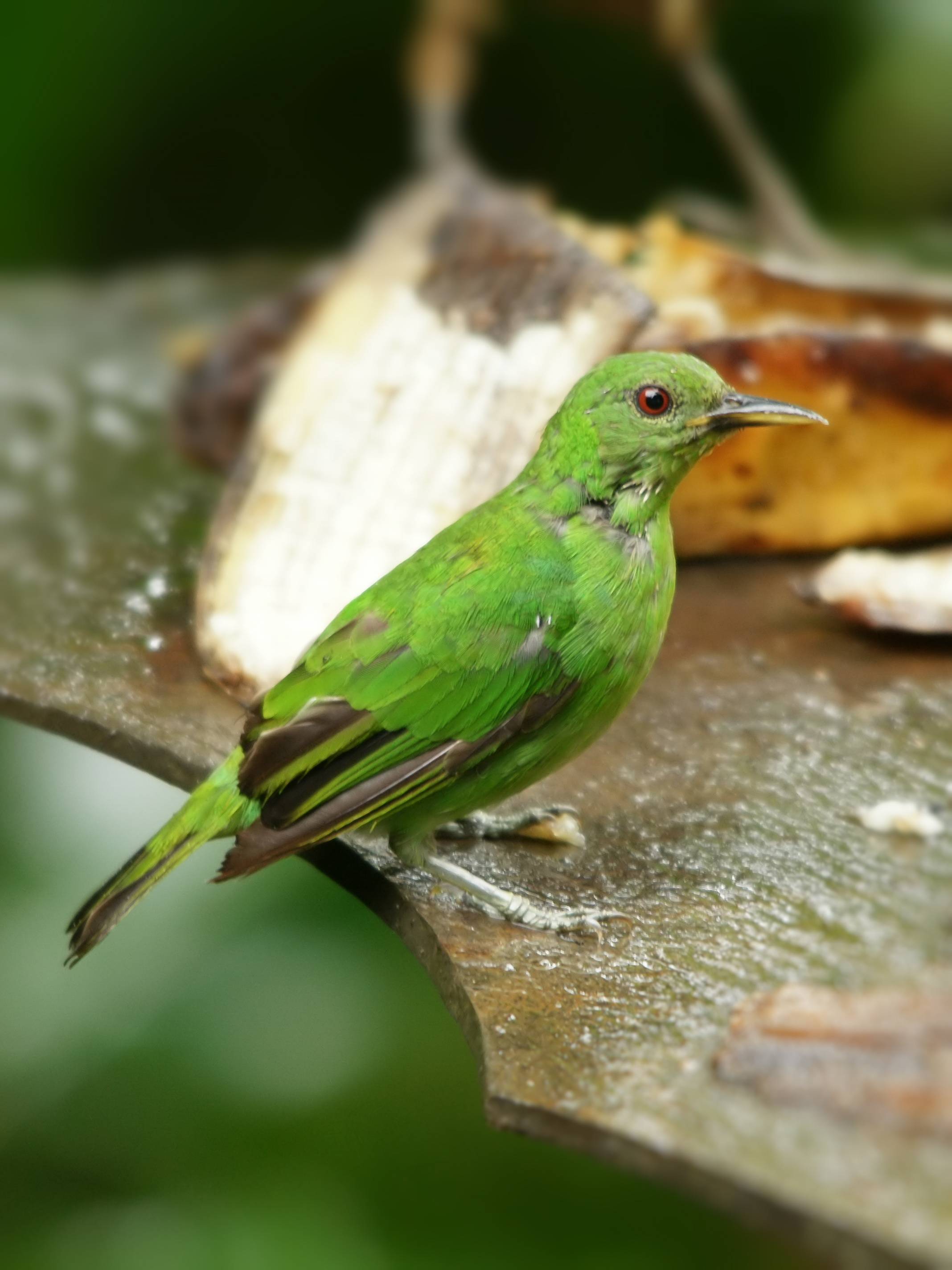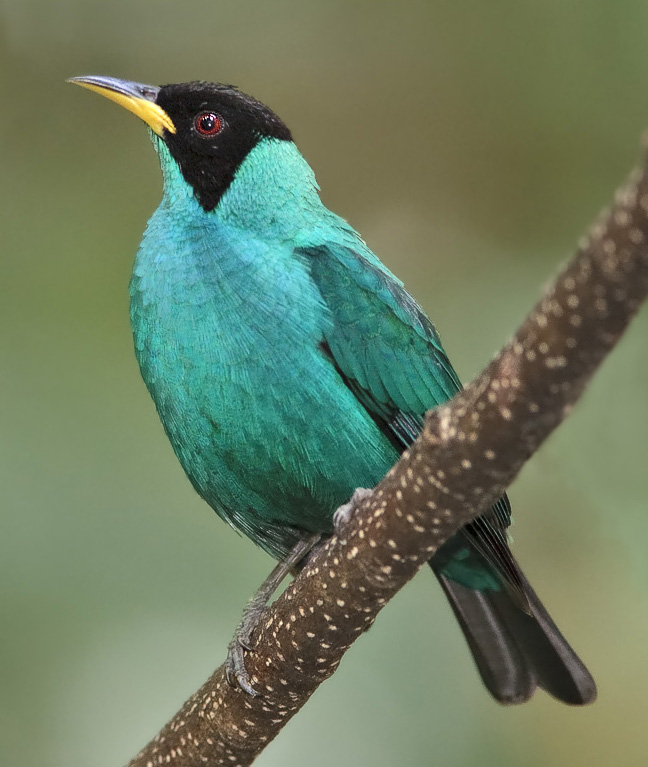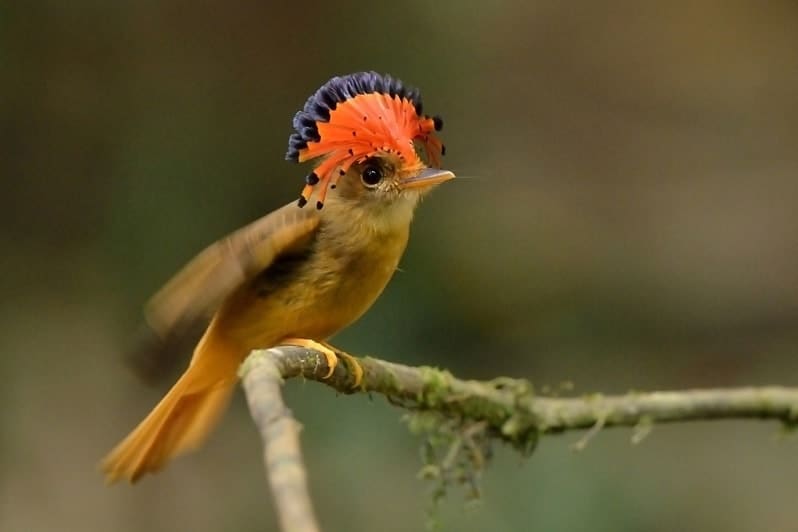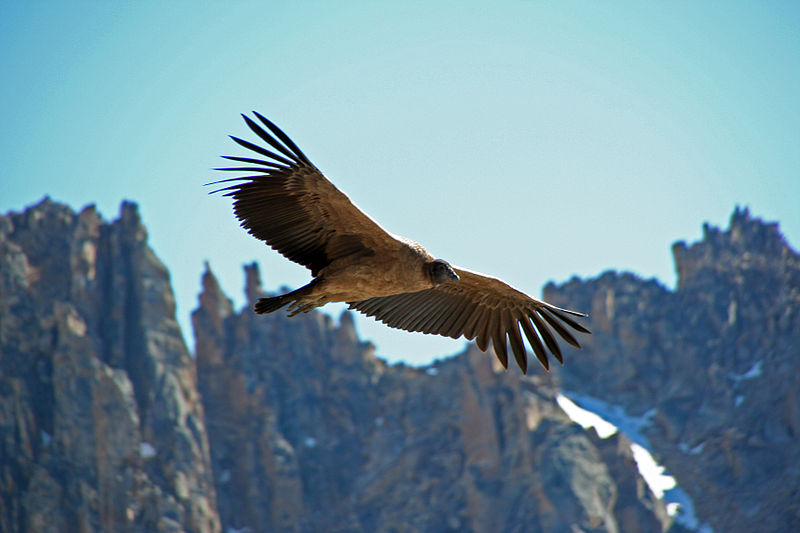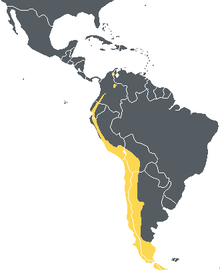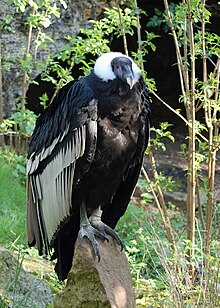
The
Andean Condor (
Vultur gryphus) is a South American bird in the
New World vulture family
Cathartidae and is the only member of the
genus Vultur. Found in the
Andes mountains and adjacent Pacific coasts of western South America, the Andean Condor has a wingspan of up to 3.2 m/10.5 ft
[2] but is exceeded by the
Wandering Albatross (at up to 3.6 m/12 ft), the
Southern Royal Albatross, the
Dalmatian and the
Great White Pelicans (at reportedly up to 3.5 m/11.6 ft).
[3]
It is a large black vulture with a ruff of white feathers surrounding the base of the neck and, especially in the male, large white patches on the wings. The head and neck are nearly featherless, and are a dull red color, which may flush and therefore change color in response to the bird's emotional state. In the male, there is a wattle on the neck and a large, dark red
comb or caruncle on the crown of the head. Unlike most
birds of prey, the male is larger than the female.
The condor is primarily a
scavenger, feeding on
carrion. It prefers large carcasses, such as those of
deer or
cattle. It reaches sexual maturity at five or six years of age and
nests at elevations of up to 5,000 m (16,000 ft), generally on inaccessible rock ledges. One or two eggs are usually laid. It is one of the world's longest-living birds, with a lifespan of over 70 years in some cases.
The Andean Condor is a national symbol of
Argentina,
Bolivia,
Chile,
Colombia,
Ecuador, and
Peru and plays an important role in the
folklore and
mythology of the Andean regions. The Andean Condor is considered
near threatened by the
IUCN.
[1] It is threatened by habitat loss and by
secondary poisoning from carcasses killed by hunters.
Captive breeding programs have been instituted in several countries.
Credits:
Wikipedia, Andean Condor


